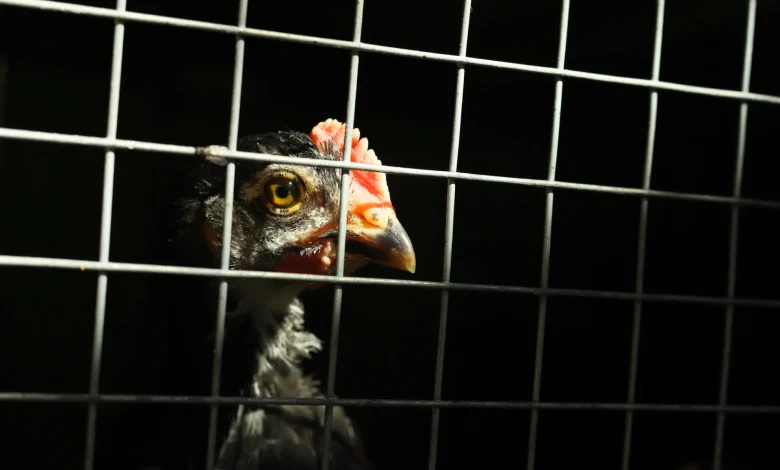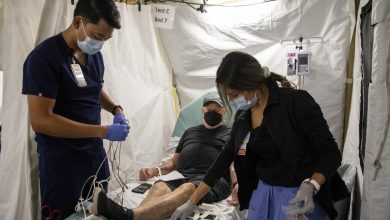The Bird Flu Doom Loop

The US poultry sector has been fighting a highly contagious form of avian influenza, also known as bird flu, for more than two years. In addition to raising the cost of eggs and turkeys, the virus now affects many other mammalian species as well as humans. These include mice, cats, dairy cows, sea lions, and mice.
And it continues to go forward, only hitting new benchmarks.
This month, the birds themselves have achieved their first milestone. A farm in Weld County, Colorado, that kept 1.3 million egg-laying hens discovered bird flu last week. In accordance with federal regulations, the farm was compelled to put down the whole flock in an attempt to contain the virus’s spread. With the death of those 1.3 million birds, the total number of chickens and turkeys killed in this outbreak has risen to nearly 100 million, which is twice as many as in the years 2014 and 2015.
The second significant event relates to humanity. Bird flu was discovered earlier in July on a larger farm in the same Colorado county that housed 1.78 million hens. To kill the hens, a squad of about 150 labourers was dispatched. Although they were provided with masks and goggles for safety, the barns’ powerful industrial blowers and 104 degree heat made it difficult for the equipment to function properly.
The virus infected six workers, more than doubling the number of Americans infected with the illness since April 2022 and making it the most contagious bird flu incident for humans in US history.
Although the H5N1 strain that has been circulating during this outbreak has shown to be relatively mild in humans, around half of the nearly 900 people who have contracted the virus worldwide since the early 2000s have passed away. The Centres for Disease Control argue that there is still little risk to the general public in the United States despite patients in Colorado and other places reporting pink eye, fever, and coughing. We now reach the third milestone: after speaking with four bird flu specialists, they largely concur with our risk assessment, but with some significant qualifiers.
According to several of those specialists, the virus strain that infected all those chickens and workers is connected to a strain that has been circulating in cows, based on genetic sequencing from one of the sick farmworkers. This indicates that the strain is more contagious than a typical H5N1 virus in poultry for other mammals, including humans.
According to Philip Meade, a microbiologist at Mount Sinai Health System, “I don’t think it is a coincidence that several people were infected with this version of the virus, which has adapted to cows.”
This does not imply that a pandemic of avian flu is imminent. That may never occur as the virus would need to evolve in a way that makes it possible for it to spread from person to person and produce symptoms that are more severe. However, the very unpredictable nature of avian flu is its greatest challenge. In the unlikely event that the virus evolves to spread between humans, Tom Peacock, a virologist fellow at the Pirbright Institute, which studies cattle diseases, said the risk level stays low “until it suddenly isn’t.” The fact that it’s spreading among cows makes it more likely to happen.
Is bird flu here to stay?
Whether the virus is endemic—that is, spreads year-round—is also called into question given that it has been spreading throughout the United States for more than two years.
According to experts, there’s a significant probability that the virus is already endemic in wild birds, which are the virus’s primary reservoir and transfer it to chicken farms during their spring and autumn migration. It’s possible that wild birds in Europe, where bird flu infections on poultry farms have sharply decreased this year, have become somewhat immune to the virus.
However, Peacock noted that a “decent proportion” of recent poultry outbreaks appear to be related to the cattle strain, describing this as a significant shift, given the presence of H5N1 in the US during the summer.
Infectious disease research fellow Brady Page of the Scripps Research Institute stated, “The concern here is that the virus can maintain a transmission cycle involving cattle — which don’t usually die or sometimes even develop noticeable symptoms from bird flu — creating a reservoir from which the virus could mutate unfavourably or cause human outbreaks.”
To put it succinctly, we might be heading towards a bird flu doom loop where the virus can more easily evolve to infect mammals and has multiple reservoirs to infect farmed birds.
The fact that the threat level is rising also speaks much about the US Department of Agriculture’s sluggish reaction to the virus, which has come under heavy fire from the field studying infectious diseases.
Dairy cows were initially infected with bird flu late in the previous year, but it wasn’t discovered until late March. It subsequently took the USDA many weeks to upload vital information regarding the virus. Additionally, it exempted farms with positive H5N1 test results from reporting requirements and did not require routine testing of dairy cows, a move that hampered efforts by experts to detect and stop the spread. Before cows crossed state lines, the government had to wait a month to at least mandate testing, and there has been no concerted effort to test a significant number of farm workers beforehand.
The letter explains in part how we arrived at this conclusion and is consistent with the USDA’s respectful relationship to industry. Because immunising poultry birds would violate trade agreements and hurt the economic line of the industry, the USDA has opposed proposals for the vaccination. The USDA was also involved in the development of the contemporary factory farming system, which produces hundreds to thousands of genetically identical animals kept in filthy barns—ideal circumstances for the spread of viruses.
Meade, the researcher from Mount Sinai, stated, “We should treat potential pandemic threats like this virus with the same seriousness that we apply to our national defence.”
It will be more difficult for us to escape the bird flu doomsday scenario if we don’t. If we don’t take swift action to limit the virus and consider the serious implications of America’s meat business causing a pandemic, we could witness an increasing number of farm birds dying horribly, sicker cows, higher food costs, and a greater chance that we will start the next pandemic.




